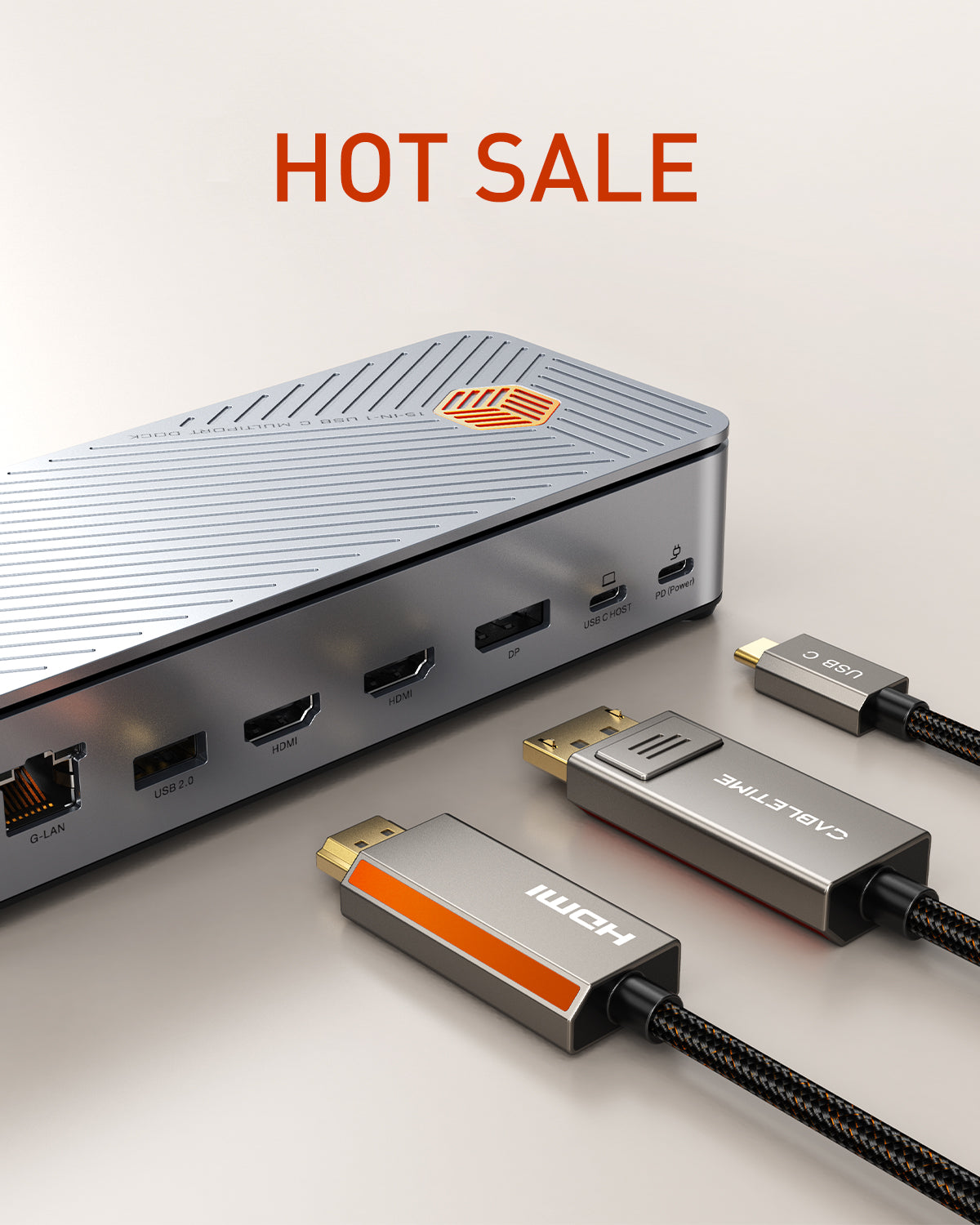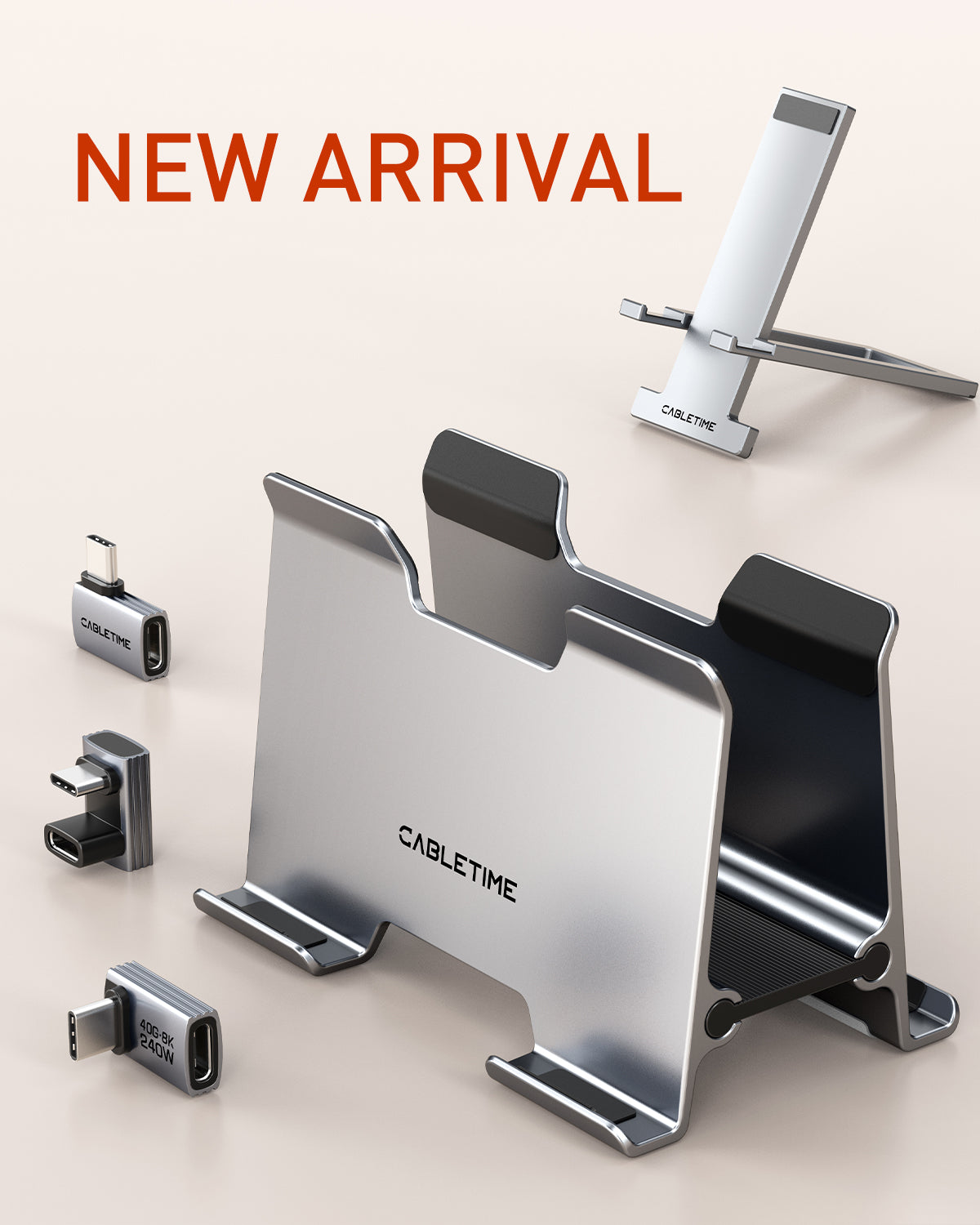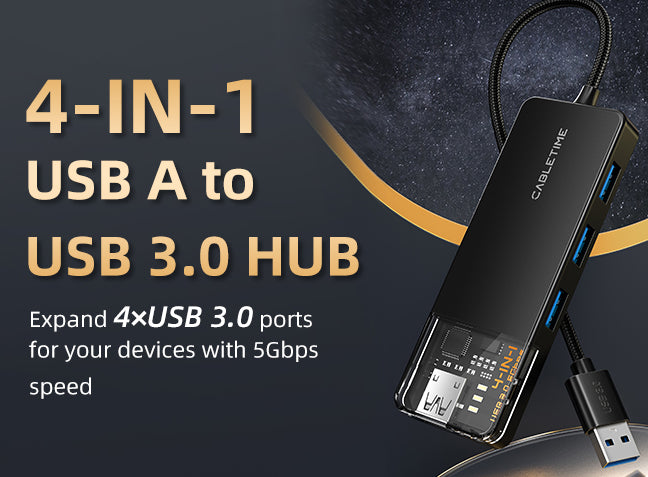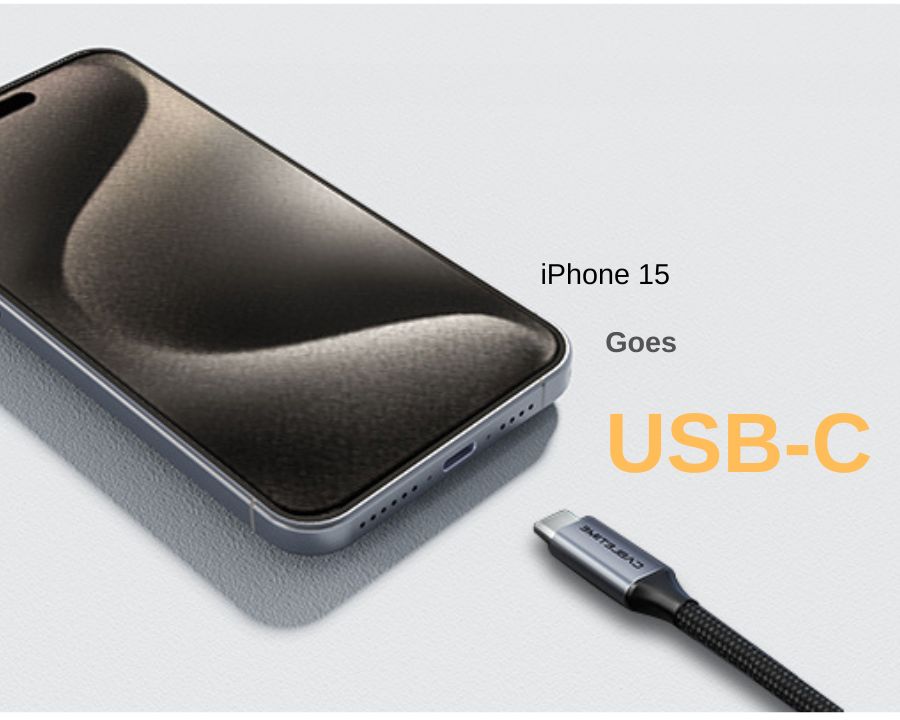Table of content
What is an HDMI Cable?
HDMI (High-Definition Multimedia Interface) cable is for the transmission of high-definition audio and video signals between devices. It is commonly used to connect televisions, computers, video games, and Blu-ray players to other devices.
8K HDMI 2.1 Cable
The Future of Connectivity
The 8K HDMI 2.1 cable is like a technological wizard. With a jaw-dropping bandwidth of 48 Gbps, it supports resolutions up to 8K at 60Hz and 4K at 120Hz. But that's just the tip of the iceberg. Here's what makes HDMI 2.1 a game-changer:
- Enhanced Audio Return Channel (eARC): Support for the most advanced audio formats and highest audio quality
- Dynamic HDR: Imagine watching a movie where every frame is a masterpiece. Dynamic HDR adjusts brightness, contrast, and color frame by frame, painting a lifelike picture.
- Variable Refresh Rate (VRR): VRR is your ally against lag, stutter, and frame tearing, ensuring a smooth and responsive gaming experience.
- Quick Frame Transport (QFT): Reduce latency for real-time gaming and virtual reality.
- Quick Media Switching (QMS): No more staring at a blank screen when switching content. QMS is your fast-forward button.
- Auto Low Latency Mode (ALLM): ALLM is the tech-savvy friend who sets up everything for you, ensuring smooth, lag-free viewing.
- Support for 10K Resolution: Beyond 8K, HDMI 2.1 even has a vision for 10K, paving the way for commercial and industrial applications.
4K HDMI 2.0 Cable
The Reliable Workhorse
The 4K HDMI 2.0 cable is like your trusty old car – reliable and gets the job done. With a maximum bandwidth of 18 Gbps, it supports resolutions up to 4K at 60Hz. Here's what keeps it running:
- 4K Resolution Support: Delivers 4K resolution (3840 x 2160 pixels) at 60 frames per second (fps), ensuring a crisp image.
- High Dynamic Range (HDR): Enhance the visual content's contrast and color.
- Audio Return Channel (ARC): ARC transmits audio without the need for additional wires.
- Consumer Electronic Control (CEC): One remote to rule them all! CEC lets you control multiple HDMI-connected devices with a single clicker.
- 3D Support: Dive into another dimension with support for 3D video formats.
- Ethernet Channel: Share your network love between connected devices.
4K HDMI 2.0 vs 8K HDMI 2.1
In 2013, the HDMI 2.0 cables were introduced. However, in 2017, HDMI 2.1 cables were released with more advanced features. This article provides a comparison between HDMI 2.1 cables and HDMI 2.0 cables for functionality, usability, and compatibility.. Plus, the HDMI 2.1 cable is backwards compatible with HDMI 2.0, making it a versatile and convenient choice.
| Feature | 4K HDMI 2.0 | 8K HDMI 2.1 |
| Bandwidth (Gbps) | 18 | 48 |
| Refresh Rate (Hz) | 60Hz | 120Hz |
| Dynamic HDR | No | Yes |
| eARC | No | Yes |
| 3D Support | Yes | Yes |
| Standard HDR | Yes | Yes |
| Resolution | 4K | 8K |
| Gaming Features | Basic | Advanced |
| Device Compatibility | 4K TVs, Older Consoles | 8K TVs, Next-Gen Consoles |
From the chart above, we can see that the 8K HDMI 2.1 cable supports a higher bandwidth of 48 Gbps, 8K resolution, and 120Hz refresh rate, with advanced features such as Dynamic HDR and gaming enhancements. In contrast, the 4K HDMI 2.0 cable offers 18 Gbps bandwidth, 4K resolution, and 60Hz refresh rate without the advanced HDR or gaming benefits.
Bandwidth and Data Rates
The bandwidth difference between HDMI 2.0 and 2.1 is like comparing a country road to a superhighway:
- 4K HDMI 2.0: A comfortable 18 Gbps
- 8K HDMI 2.1: Up to 48 Gbps
This massive leap enables HDMI 2.1 to carry uncompressed 4K video at 120 fps and 8K at 60 fps. It's a new era for gamers and movie buffs alike.

Supported Resolutions and Refresh Rates
Here's where the 4K and 8K divide becomes more than just numbers:
- 4K HDMI 2.0: Supports 4K resolution (3840 x 2160 pixels) at 60Hz
- 8K HDMI 2.1: Supports 8K resolution (7680 x 4320 pixels) at 60Hz and 4K at 120Hz
The jump from 4K to 8K is like going from a garden-variety garden to a botanical wonderland. While 4K offers over 8 million pixels, 8K takes that to an astonishing 33 million pixels. This pixel paradise translates to an incredibly detailed and lifelike image.
For those craving higher refresh rates in 4K, HDMI 2.1's support for 120Hz doubles the frame rate compared to HDMI 2.0. It's like watching a ballet dancer in slow motion – every movement is fluid and graceful.
Features and Enhancements
Here's a side-by-side comparison of the features:
- HDR Comparison: 4K HDMI 2.0: Standard HDR for improved color and brightness 8K HDMI 2.1: Dynamic HDR for a more vivid and immersive visual experience by adjusting brightness and color on a frame-by-frame basis.
- Audio Return Channel (ARC): 4K HDMI 2.0: Basic ARC for audio transfer between devices 8K HDMI 2.1: Enhanced Audio Return Channel (eARC) for higher audio quality and support for advanced audio formats
- 3D Support: 4K HDMI 2.0: Supports 3D content for an immersive viewing experience 8K HDMI 2.1: Continues to support 3D content, with the added benefits of higher resolutions and refresh rates
- Additional Features in 8K HDMI 2.1: Variable Refresh Rate (VRR): Reduces visual artifacts in gaming, improving smoothness Quick Frame Transport (QFT): Minimizes display latency, improving responsiveness in interactive applications
Moving from Standard HDR to Dynamic HDR represents a leap in visual quality, enabling more nuanced and lifelike images. Similarly, the upgrade from ARC to eARC provides superior sound transmission. This enhances the audio experience.
HDMI 2.1 exclusive features like VRR and QFT address specific needs like gaming and real-time interaction for a more engaging and responsive experience.
How to Choose the Right HDMI Cable
Choosing the right HDMI cable, whether 4K HDMI 2.0 or 8K HDMI 2.1, depends on your specific needs and devices. Here's a step-by-step guide to help you make the right choice:
- Identify Your Devices: List all the devices you plan to connect, such as TVs, gaming consoles, sound systems, etc.
- Check Compatibility: Refer to the device manuals or manufacturer websites to determine the HDMI version supported.
- Consider Future Needs: Think about potential future upgrades, such as a new gaming console or 8K TV.
- Evaluate Features: Assess the features you need, such as higher refresh rates, Dynamic HDR, or eARC.
- Set a Budget: Determine your budget, keeping in mind that HDMI 2.1 cables may be slightly more expensive.
- Consult Trusted Sources: Check reviews and recommendations from trusted sources like Cable Matters or Anker.
- Purchase from Reputable Sellers: Buy from well-known brands or authorized sellers to ensure quality and authenticity.
Popular Devices and Compatibility
- Devices with HDMI 2.0: Most 4K TVs and monitorsPlayStation 4, Xbox OneApple TV 4K (1st generation)Many Blu-ray players and soundbars
- Devices with HDMI 2.1: 8K TVs and some high-end 4K TVsPlayStation 5, Xbox Series X/SNVIDIA RTX 30 Series Graphics CardsAdvanced AV receivers and sound systems
Matching your HDMI cable with your device's capabilities is like pairing wine with cheese. While HDMI 2.0 is perfect for most 4K content, HDMI 2.1's advanced features shine with next-gen devices.
Frequently Asked Questions (FAQs)
Q: Why opt for 8K HDMI 2.1 over 4K HDMI 2.0?
- A: HDMI 2.1 not only supports higher resolutions, but also offers features such as Dynamic HDR and eARC. . It's a future-ready choice, especially if you're eyeing next-gen gaming consoles or high-end home theater systems.
Q: Do I need a 4K or an 8K HDMI cable?
- A: Think of it as choosing the right tool for the job. For 4K displays, HDMI 2.0 is enough. But if you're looking at 8K displays or high refresh rates, HDMI 2.1 is the way to go.
Q: Can a standard HDMI handle 4K?
- A: Absolutely! A standard HDMI 2.0 cable is like your reliable old bicycle – it can support 4K resolution. But for advanced features, you might need the sports car that is HDMI 2.1.
Q: Are 8K HDMI cables a worthy investment?
- A: If you're gearing up for 8K displays or want to leverage HDMI 2.1 features, then yes, it's like investing in a first-class ticket for your viewing experience.
Q: Can I use an 8K HDMI cable with a 4K TV?
- A: Yes, you can. HDMI 2.1 cables are like a universal adapter – backward compatible. But remember, a 4K TV won't magically display 8K just because you're using an 8K cable.
*Q: Should I get HDMI 2.1 or stick with 2.0 for my Apple TV 4K?
- A: HDMI 2.0 should work fine for Apple TV 4K. But if you're thinking about future upgrades or want to take advantage of HDMI 2.1 features, you should consider the newer cable. It's like buying a jacket that's perfect for spring but also works in winter.
Q: Can HDMI 2.0 handle 4K at 120Hz?
- A: Typically, HDMI 2.0 supports 4K up to 60Hz. For 4K at 120Hz, you'd probably need HDMI 2.1. It's like asking your family car to race in the Grand Prix - not quite right.
Q: Can my 4K 144Hz monitor output 2K at 120Hz using HDMI 2.0?
- A: HDMI 2.0 should be able to handle 2K at 120Hz. However, always check your monitor and graphics card specifications to be sure. It's like checking the recipe before cooking - better safe than sorry.
Understanding the differences and capabilities of 4K HDMI 2.0 and 8K HDMI 2.1 helps you make an informed decision. Whether you're gearing up for next-generation gaming or just want the best movie night experience, the right HDMI cable is waiting for you. So grab your popcorn, settle in, and let the show begin.








Leave a comment
This site is protected by hCaptcha and the hCaptcha Privacy Policy and Terms of Service apply.